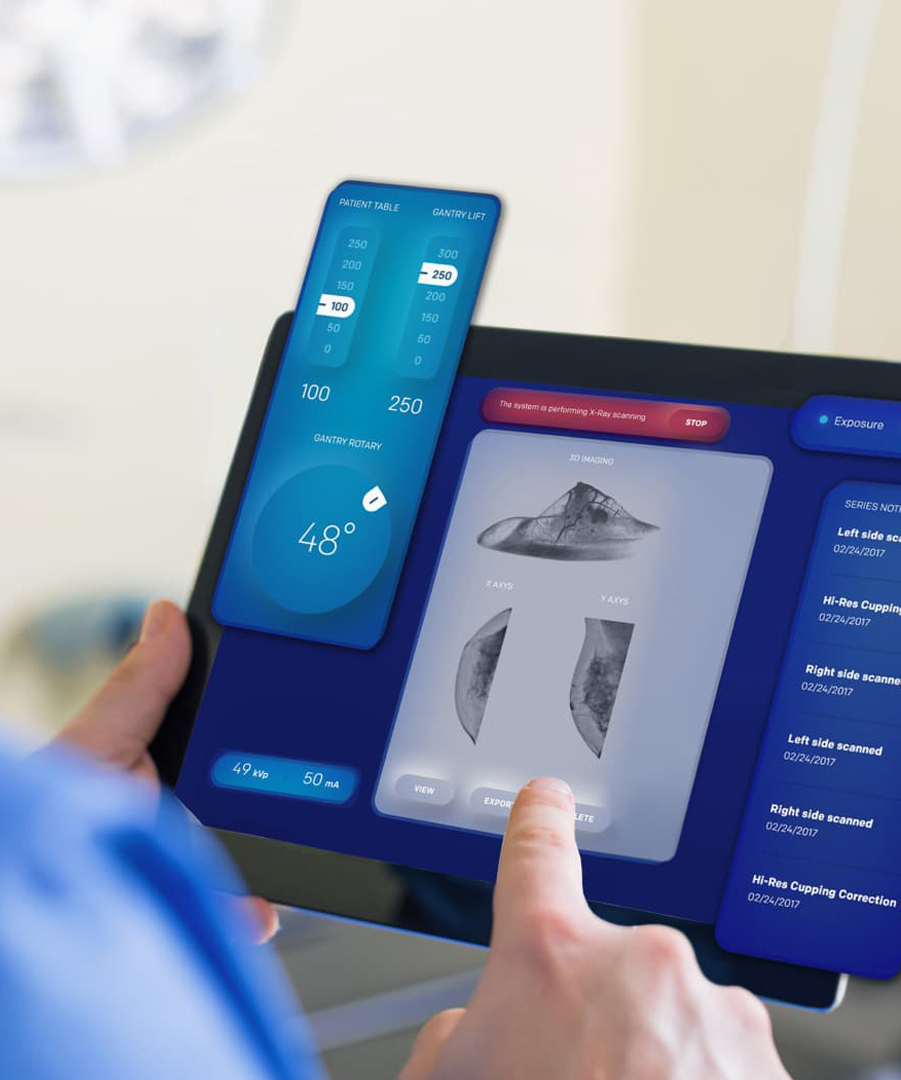


Автомобили с пеной, являясь важнейшим элементом современного пожарного оборудования, играют незаменимую роль в борьбе с различными типами пожаров. Компания POWERSTAR специализируется на исследованиях, разработке и производстве различных пожарных автомобилей и может изготовить автомобили с пеной, используя шасси различных марок и различной грузоподъемности, в соответствии с потребностями заказчика. Среди них такие модели, как Пожарные машины ISUZU с пеной , пожарные машины с пеной HOWO, пожарные машины FAW и пожарные машины с пеной Shacman, отвечающие специфическим требованиям различных условий, таких как тушение пожаров на нефтехимических заводах, в аэропортах и в городских условиях. В этой статье подробно рассматриваются определение, принципы работы, существенные преимущества и основные области применения пожарных машин с пеной, что поможет вам полностью понять ценность этого специализированного пожарного оборудования.
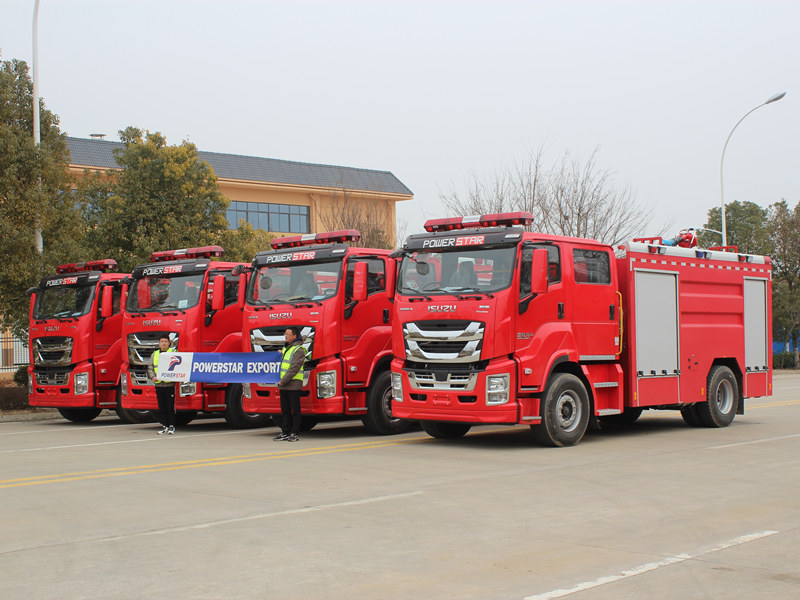
1. Что такое пенная пожарная машина?
Пожарный автомобиль с пеной — это специализированное пожарное средство, оснащённое пеносмесителем и системой распыления. Компания POWERSTAR производит различные пожарные автомобили с пеной на высококачественных шасси известных отечественных и зарубежных брендов, таких как ISUZU, HOWO, FAW и Shacman, а также эффективными системами дозирования пены. Эти автомобили в основном используются для тушения пожаров, связанных с возгоранием легковоспламеняющихся жидкостей, таких как нефть и химикаты. В отличие от обычных пожарных автомобилей с цистернами для воды, пожарные автомобили с пеной не только перевозят воду, но и оснащены специальными баками для пенообразующей жидкости и интеллектуальными системами дозирования, которые смешивают воду и пенообразователь в определённых пропорциях для образования огнетушащей пены.
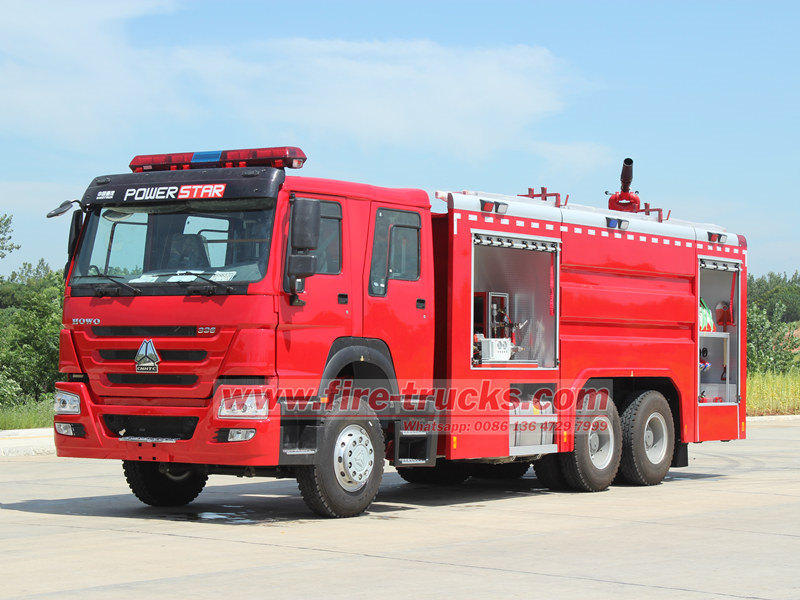
Эти пожарные машины, как правило, изготавливаются на базе шасси большегрузных автомобилей и в зависимости от объема перевозимой жидкости могут быть разделены на большие, средние и малые пожарные машины для тушения пеной. POWERSTAR 's Пожарные машины с пеной HOWO Может перевозить более 15 тонн жидкости, а средний пеногаситель ISUZU, модифицированный на шасси ISUZU, сочетает в себе мобильность и эффективность пожаротушения. В последние годы, благодаря технологическому прогрессу, появились небольшие пеногасители, модифицированные на базе пикапов, обладающие гибкостью и маневренностью, что делает их особенно подходящими для тушения ограниченных пространств и быстрого реагирования на первоначальные пожары. Основная ценность пеногасителей заключается в их способности быстро генерировать и распылять огнетушащую пену, эффективно покрывая поверхность горящих материалов, изолируя кислород и снижая температуру, тем самым обеспечивая быстрое тушение пожара.
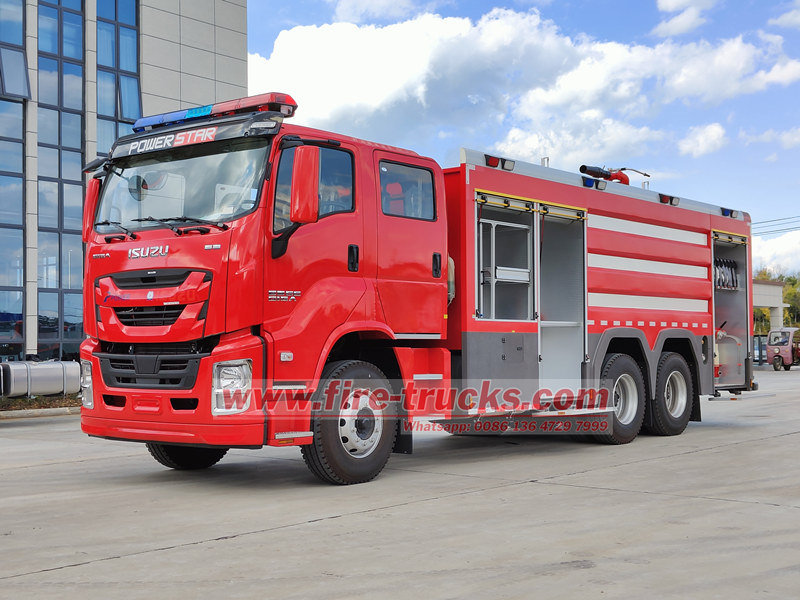
2. Принцип работы пенных пожарных машин
Принцип работы пеногасящих автомобилей основан на точной системе смешивания и подачи пены. Прибыв на место пожара, операторы сначала выбирают необходимое соотношение пены (обычно 3% или 6%) в зависимости от условий пожара. Пожарный насос забирает воду из резервуара с водой, а пенный насос – концентрированную пену из резервуара. Они автоматически смешиваются в дозаторе в заданном соотношении.
Смешанный пенный раствор затем подается по пожарным рукавам к пенным лафетным стволам или пенным насадкам, где он всасывает воздух во время распыления, образуя огнетушащую пену. Эта пена обладает превосходной укрывистостью и долговечностью, эффективно изолируя горящий материал от кислорода. Для больших пожарных автомобилей пенный лафетный ствол может подавать пену на расстояние более 70 метров, в то время как небольшие пенные системы, установленные на пикапах, больше подходят для точного тушения пожаров на близком расстоянии.
В частности, современные высококлассные пенные пожарные автомобили оснащены интеллектуальными системами управления, которые позволяют в режиме реального времени корректировать соотношение компонентов смеси и режимы распыления в зависимости от типа пожара. Некоторые модели также оснащены системами порошкового пожаротушения, что позволяет создавать комплексные решения для пожаротушения, значительно повышающие эффективность.
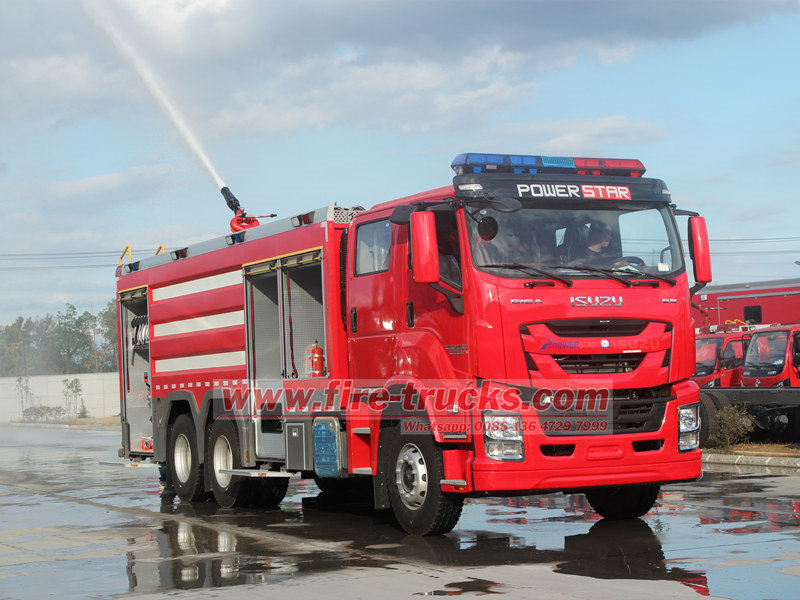
3. Значительные преимущества пенных пожарных машин
Пенные пожарные машины
Обладая множеством преимуществ по сравнению с традиционными пожарными автомобилями, они являются предпочтительным средством пожаротушения в зонах повышенного риска, таких как нефтехимические заводы и аэропорты. Их основные преимущества заключаются в следующем:
1. Высокоэффективное пожаротушение:
Огнетушащая пена способна быстро покрыть большие площади возгорания, особенно при пожарах нефти, где её огнетушащая эффективность более чем в 10 раз превышает эффективность одной только воды. Слой пены не только изолирует кислород, но и эффективно предотвращает испарение паров топлива, предотвращая повторное возгорание.
2. Экономия воды:
По сравнению с водяным пожаротушением, пенное пожаротушение значительно сокращает расход воды. Это особенно важно при пожаротушении в районах с ограниченными водными ресурсами, и именно поэтому малогабаритное оборудование, такое как пожарные автомобили на базе пикапов, может играть важную роль.
3. Высокая безопасность:
Автомобили пенного пожаротушения обычно оснащены дистанционно управляемыми пенными лафетными стволами, позволяющими пожарным работать с безопасного расстояния. Некоторые модели высокого класса также оснащены тепловизорами и детекторами токсичных газов, что дополнительно повышает безопасность пожарных.
4. Универсальность:
Современные пенные пожарные автомобили часто совмещают в себе несколько функций пожаротушения, способных распылять пену, чистую воду или водяной туман, что делает их многофункциональными. Даже небольшие пенные системы, размещенные на платформах пикапов, обладают такой гибкой возможностью переключения.
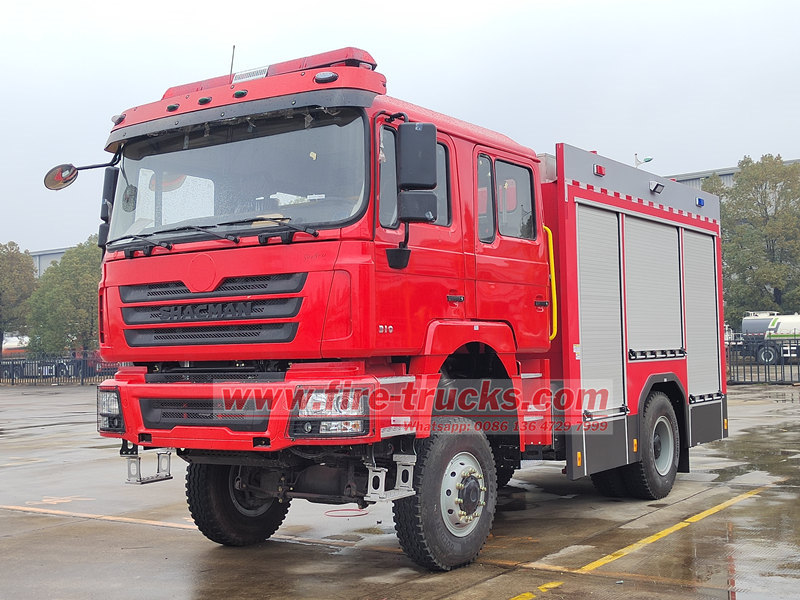
4. Основные области применения пенных пожарных машин
Специфические особенности пенных пожарных автомобилей делают их незаменимыми в ряде уникальных областей, включая следующие:
• Нефтехимическая промышленность:
Это основная область применения автомобилей пенного пожаротушения. Пожары в нефтехранилищах, на нефтеперерабатывающих и химических заводах часто связаны с горючими жидкостями, поэтому автомобили пенного пожаротушения являются предпочтительным оборудованием для таких ситуаций. Крупные нефтехранилища обычно оснащаются несколькими автомобилями пенного пожаротушения высокой производительности, образуя трёхмерную сеть пожаротушения.
• Пожаротушение в аэропорту:
Аэропорты гражданской авиации должны быть оснащены специализированными аэродромными автомобилями пенного тушения (также известными как «автомобили быстрого реагирования»). Эти машины отличаются высокой скоростью, что позволяет им быстро достигать любой точки взлётно-посадочной полосы для тушения возгораний авиационного топлива. Некоторые аэропорты также используют лёгкие автомобили пенного тушения на базе пикапов в качестве вспомогательных средств.
• Комплексное городское пожаротушение:
С ростом числа городских высотных зданий и подземных пространств пожарные машины с пеной играют всё более важную роль в тушении городских пожаров. Они способны не только тушить обычные пожары, но и эффективно справляться с особыми ситуациями, такими как возгорание автомобилей на подземных парковках и возгорание трансформаторов.
• Индустриальные парки:
Различные производственные предприятия, логистические склады и другие объекты постепенно оснащаются автомобилями пенного пожаротушения или небольшими системами пенного пожаротушения. В частности, в местах хранения большого количества горючих материалов автомобили пенного пожаротушения обеспечивают более надежную защиту от пожаров.
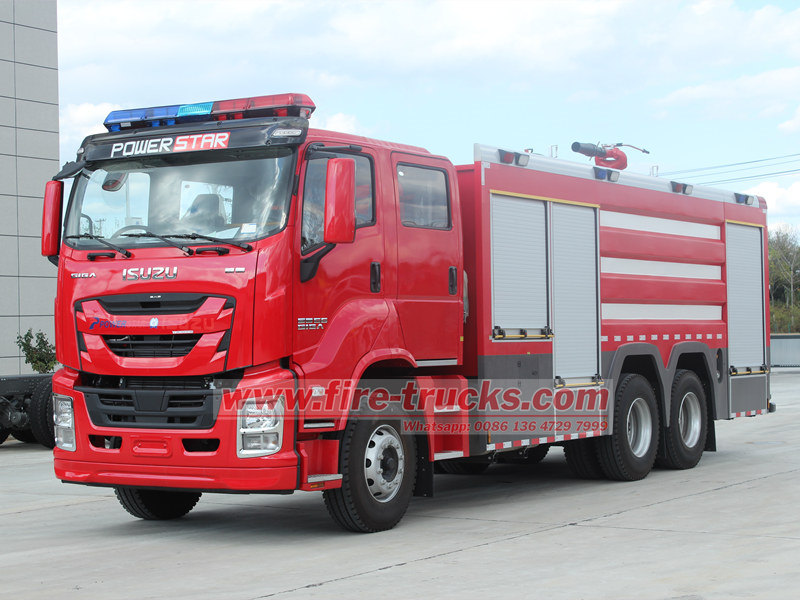
Вас может быть заинтересован в следующей информации